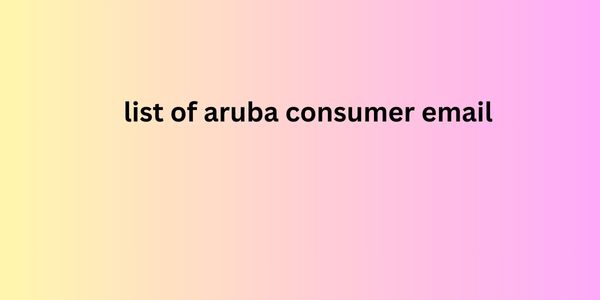In B2B marketing, it is important not only to increase awareness of products and services and promote sales, but also to maintain high levels of user satisfaction throughout the entire process, from awareness to purchase and use of the product or service.
A frustrating path to purchase will list of aruba consumer email not improve user satisfaction, and with 77% of business buyers finding the path to purchase complicated, marketers have a role to play.
The concept of UX (user experience) is an effective way to increase user satisfaction.
UX has been used primarily in the design of websites, apps, and products and services, but it can also be incorporated into marketing. This article explains the overview of UX and why marketers in B2B and SaaS companies should value UX.
What is UX (User Experience)?
UX (User Experience) is a term that refers to the entire experience a customer has when using a website, app, product or service.

I was able to enjoy the benefits
I was satisfied (for my company and for myself)
I got the information I wanted right away
The problem was solved
The easier it is for users to have a rewarding experience, such as those mentioned above, the higher the quality of UX is considered to be.
A similar word to UX is UI, which is an abbreviation for user interface and refers to the point of contact with the user. Generally, it refers to the operation screen of a website or app.
Buttons and text are easy to see
Quickly open the page you want to see
It's easy to understand where to press
A UI that is easy to use, such as the above, is considered to be of high quality. For SaaS companies, the quality of the UI is particularly important, as it is directly linked to the value of the services provided.
Good UI is part of good UX; the two are inseparable.
Background of the development
The term UX first appeared in Japan in 1990 in a book by cognitive scientist and cognitive engineer Don Norman (hereafter referred to as Norman). The book was called "Who is Design for? A Cognitive Scientist's Principles of Design" (original title: The Design of Everyday Things ).
In 1999, the international standard ISO 13407 was established to ensure usability . Based on the perspective of Human Centered Design (HCD), convenience and experiences from the user's perspective began to be pursued.
This standard was revised in 2010 to become "ISO9251-210," at which point the concept of UX was added.
